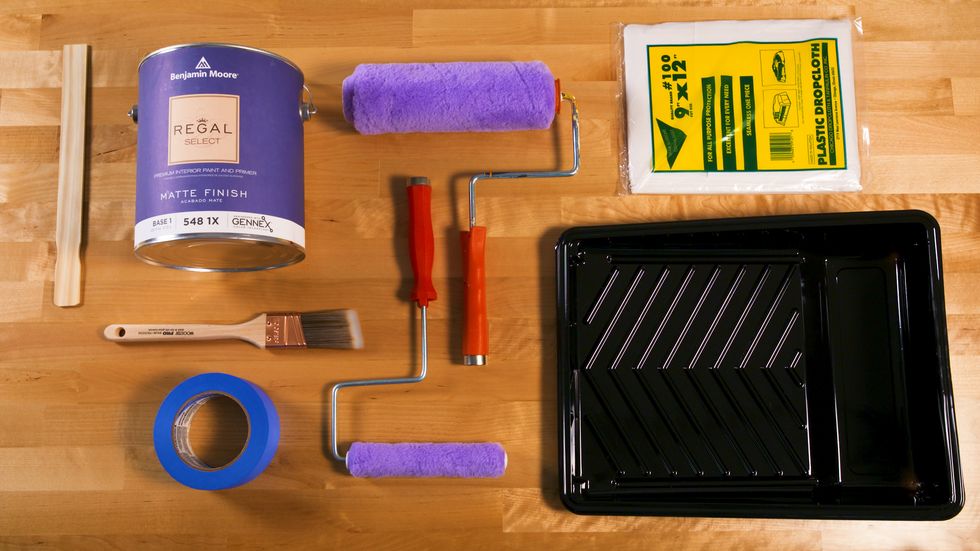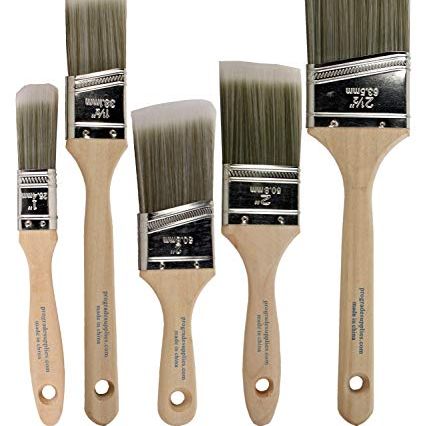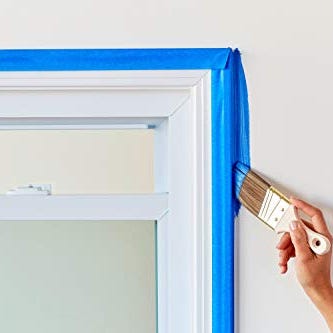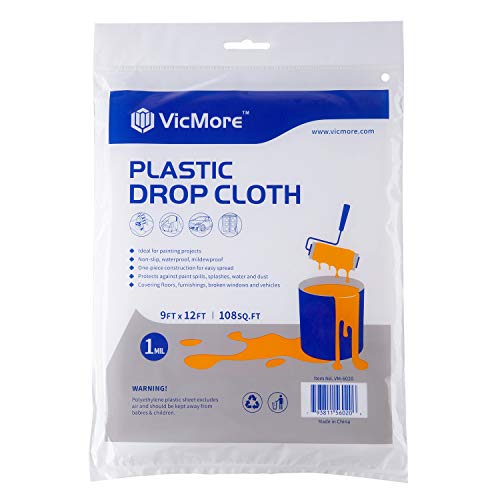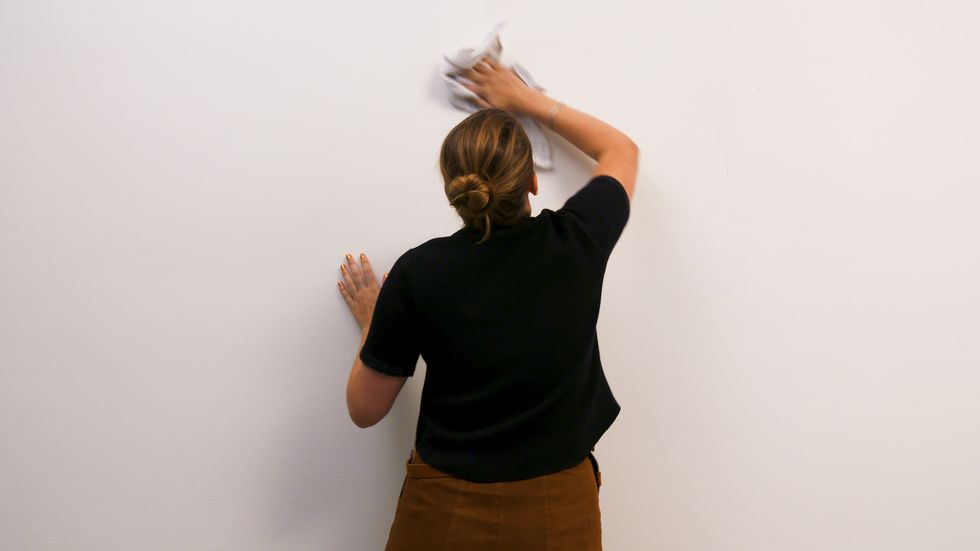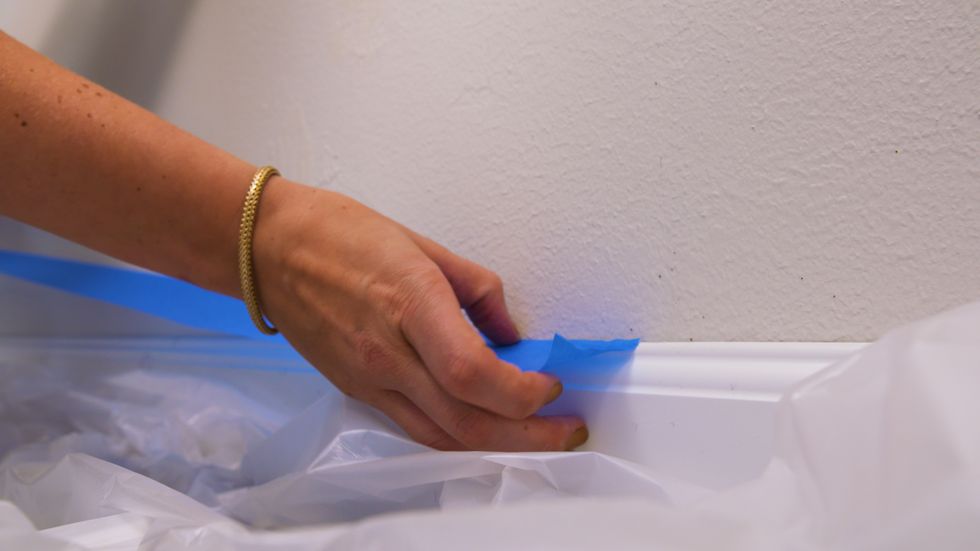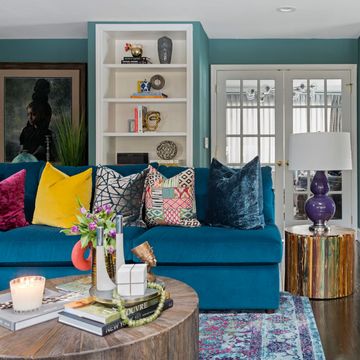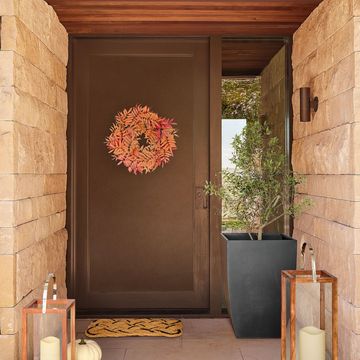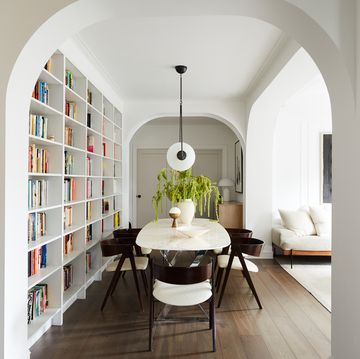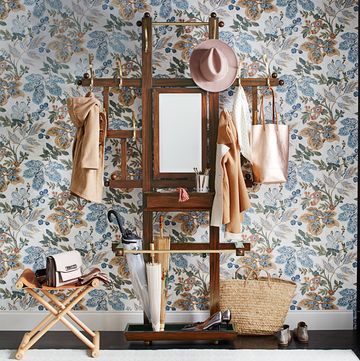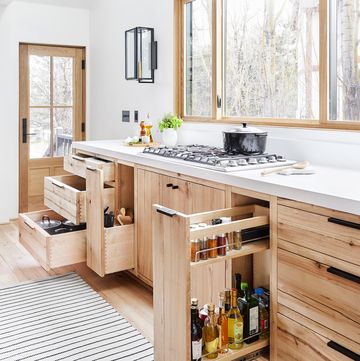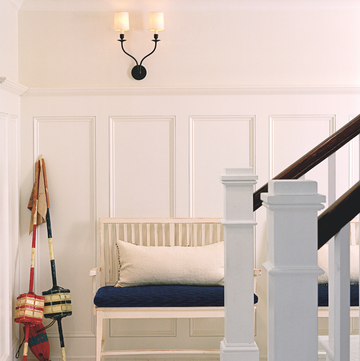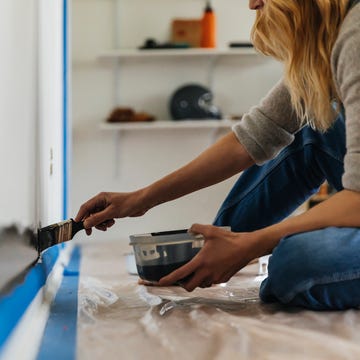Designers and DIYers alike know that there's no easier way to transform a space than with a fresh coat of paint. But, if you're going to go to all the trouble to rearrange your furniture and cover it with plastic in order to make that change, you're going to want to get it right. So, without further ado, we present: Your One-Stop Guide to Painting Your Home. Though the task is simple, sticking to a few key tricks will make all the difference in giving you a professional-looking surface. Read on to learn how.
Materials
- Paint
- Sander
- Rags
- Paint tray
- Paint stirrer
- Paint Roller
- Paint brush
- Painter's tape
1.Choose Your Finish
Yes, color is important when picking paint, but so is finish. The right finish for your space will depend on light, color, and usage (for example, highly-trafficked rooms do better with a semi-gloss). If you're unsure of what finish will be best, you'll want to try a couple swatch options, like you would with color. Or, check our handy guide.
2. Prep your wall
Preparation is key when painting. Before you touch a paintbrush, you'll want to make sure your wall is ready for painting—dirty or uneven surfaces will distort the color and finish of the final product. If your wall has any textural abnormalities, or is raw wood, you'll want to sand it, clean it, and then apply a primer. If your wall is plaster or is already painted a light color, wipe it down with a damp cloth (making sure to get the dust off any molding and baseboards) and wait for it to dry before painting.
3. Define your edges
To ensure clean line, tape off the section where you want to apply paint, defining lines at the edges of baseboard, moldings, and window and door frames. Additionally, tape over or remove the plates from any switches or outlets (you can do this with a simple screwdriver!) for a polished end result.
Cutting in:
One key secret to getting perfect edges for your paint and primer? A trick known as "cutting in" before painting the wall with a roller. To do this, you'll want to use a tapered brush dipped 1/3 of the way in your paint or primer. Using the fine tip of this brush, paint the edges of your wall, ensuring you get coverage right up to the tape.
4. Ready your paint
Once your walls are prepped and taped, lay a drop cloth under your work surface, then place your paint try on top. Open your paint can and stir the paint with a stirrer before pouring a small amount into the tray (less is more here, since you can always pour out additional paint—but excess paint will dry out if left in the tray too long).
5. Roll on paint
Dip a roller brush into the paint and drag it across the tray to remove excess (it shouldn't drip when lifted). Then, begin painting your walls with the roller, working across the wall and applying an event amount of paint by pressing on the roller as you roll. Tip: keep a wet rag handy, so if you do have any drips, you can wipe up immediately with no lasting damage.
6. Touch up edges
For hard-to-reach corners or tight edges, abandon the roller in favor of a small brush.
7. Let dry
Once the wall is completely covered, let it dry (while doing this, you can store in-use paint brushes and rollers in the fridge wrapped in a wet paper towel), then...
8. Apply second coat
Apply a second coat to ensure even coverage, following the same steps as before. Let it dry and then...
9. Add finishing touches
Remove painters tape, then reapply outlet and switch plates.
10. Rearrange your furniture
Put your furniture back where it was—or, if the new color has inspired you to do a bigger refresh, that's ok too!
Follow House Beautiful on Instagram.
Hadley Keller is the Director of Editorial and Community Engagement at the Design Leadership Network, a community of top interior designers. She has covered design, interiors, and culture for over 10 years.

